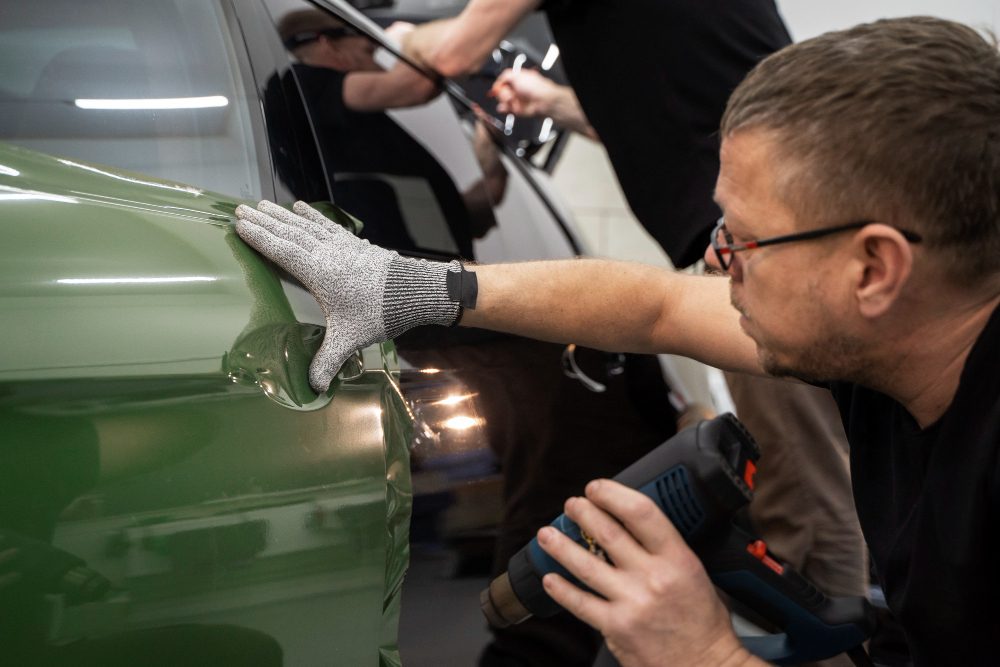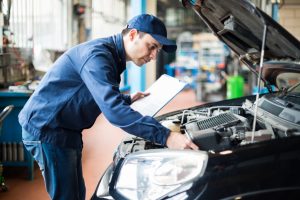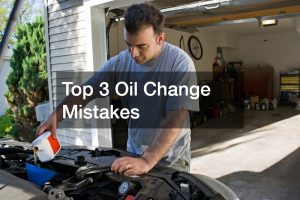Ceramic coating, often called nano-coating, is a chemical solution applied to a car’s exterior to protect its surface from external paint damage. The coating blends with the vehicle’s paint and creates an additional hydrophobic layer of protection. This means it prevents minor scratches, dirt, and chemical contaminants from directly contacting the car’s paint. Ceramic coating is like a second layer of skin or a sacrificial layer of protection over your car’s clearcoat.
Ceramic coating offers numerous benefits that contribute to your vehicle’s longevity and aesthetic appeal. First, it protects against harmful UV rays, preventing the paint from oxidizing and fading over time. Second, the hydrophobic nature of the coating means that water beads up and rolls off the surface, taking dirt and grime with it. This makes washing your car easier and reduces the frequency of car washes. Third, the coating is chemically resistant to most pollutants, preventing them from bonding to your car’s paint. Lastly, ceramic coating enhances your vehicle’s appearance by giving it a deeper gloss and shine, making it look brand new for a longer period.
How Long Does Ceramic Coating Last?
Product quality and application method determine the longevity of a car’s ceramic coating.
Average Lifespan of Ceramic Coating
The average lifespan of a ceramic coating is typically around 2 to 5 years if properly maintained. The quality of the coating product largely influences this time frame, the preparation and application process, and the conditions under which the vehicle is used and stored. High-end ceramic coatings, applied professionally, can last up to 10 years under ideal conditions.
However, if the vehicle is frequently exposed to harsh weather conditions or heavy pollutants, the lifespan of the coating may be on the lower end of the range. Regular washing and proper maintenance can extend the effectiveness of the coating, maintaining its glossy finish and protective properties. It’s worth noting that while the ceramic coating is long-lasting, it’s not permanent and will eventually need to be reapplied to continue offering optimal protection.
Signs That Your Ceramic Coating Needs Reapplication
Observing your vehicle’s surface can reveal signs that it’s time to reapply the ceramic coating. One clear sign is the loss of the hydrophobic effect. If water stops beading up on the surface and starts to spread out or stick, it may indicate that your coating is wearing thin. Another sign is the fading of the glossy finish. If your car appears dull and lacks the deep gloss it had post-coating, it’s a signal that the ceramic coating might need reapplication.
Additionally, if you notice that dirt and grime are harder to wash off or that pollutants are beginning to bond with the car’s paint, this could be a sign that the ceramic coating is losing its effectiveness. Lastly, if minor scratches and marks appear on your car’s surface, the protective layer has worn off, and reapplication is necessary. Always remember that regular maintenance and care can significantly extend the lifespan of your ceramic coating.
Proper Maintenance and Cleaning Techniques
Proper maintenance and cleaning techniques are instrumental in prolonging the lifespan of your car’s ceramic coating. Here are some recommended best practices:
Regular Washing
Regular washing plays a vital role in maintaining the efficacy of a ceramic coating. Washing the coated vehicle at least once every two weeks is recommended. This frequency may increase if the car is regularly subjected to harsh conditions or contaminants. While washing, use a pH-neutral car wash soap to avoid damaging the coating.
It’s advisable to use the two-bucket wash method, which involves one bucket filled with soapy water and the other with clean water for rinsing the wash mitt. This method reduces the chance of dirt particles scratching the coating. Also, remember to rinse your car thoroughly, ensuring all soap is removed from the surface, as soap residue can diminish the coating’s hydrophobic properties. After washing, dry the vehicle properly using a microfiber cloth to prevent water spots from forming, which can affect the coating’s appearance. Lastly, avoid washing your car under direct sunlight as it can cause water spots and streaks, potentially damaging the ceramic coating.
Dry Your Car Properly
Drying your car properly is a key step in maintaining the integrity of the ceramic coating. After thoroughly rinsing off the soap, it’s crucial to immediately dry the vehicle to prevent water spots from forming on the surface. Water spots can harden and potentially damage the coating if left unattended.
Use a high-quality microfiber drying towel, which is gentle on the surface, to avoid scratching the coating. Start from the top of the vehicle and work your way down, ensuring you dry all areas, including the windows, mirrors, and rims. It’s advisable to use a blotting action rather than a wiping or dragging action to prevent dirt particles from scratching the coating.
Consider using a car air blower for areas that are difficult to reach with a towel. This can effectively remove water from crevices, gaps, and other hard-to-reach areas. Remember, the goal is to remove all water from the surface of your vehicle, leaving it completely dry and spotless. This will help maintain the hydrophobic properties of the ceramic coating, ensuring it continues to repel water and contaminants effectively.
Lastly, avoid drying your car under direct sunlight. The heat can cause the water to evaporate quickly, leaving behind mineral deposits that can tarnish the coating. Choose a shaded area or wait for a cooler part of the day to dry your vehicle. With proper drying techniques, you can maximize the lifespan and effectiveness of your ceramic coating.
Use a Ceramic Coating Spray
Ceramic coating spray is a product that helps maintain and enhance the performance of the ceramic coating on your vehicle. It can be a top-up for your existing coating, revitalizing its hydrophobic properties and restoring its glossy appearance.
First, use the ceramic coating spray to wash and dry your vehicle thoroughly. Spray a generous amount of the product onto a small section of the vehicle’s surface. Using a microfiber cloth, spread the spray evenly, ensuring that the area is well-covered. Based on the manufacturer’s instructions, allow the spray to sit for a few minutes, then buff it off using a clean microfiber cloth until the residue is completely removed and the surface shines. Repeat this process for all sections of your vehicle.
Remember, the ceramic coating spray does not replace a full ceramic coating service. Instead, it’s a supplementary product that enhances the existing coating’s properties and extends its lifespan. Regular use of a ceramic coating spray and proper maintenance routines can significantly improve the longevity and performance of your vehicle’s ceramic coating.
Avoid Harsh Chemicals
Avoiding harsh chemicals is crucial to maintaining the integrity and longevity of your vehicle’s ceramic coating. Chemicals with high pH levels, such as acidic cleaners or heavy-duty detergents, can potentially strip away the coating and damage the underlying paint. Always use pH-neutral cleaning products specifically designed for ceramic-coated vehicles.
These products are mild yet effective in removing dirt and grime without compromising the protective properties of the ceramic coating. It’s also essential to avoid automatic car washes, as they often use harsh chemicals and abrasive materials that can deteriorate the ceramic coating prematurely. Instead, opt for a hand wash using approved car wash soaps and soft washing mitts to clean your car while preserving its protective layer safely. By being mindful of the products you use on your ceramic-coated vehicle, you can significantly enhance the durability and effectiveness of the coating.
Park in Shade
Parking in the shade plays a crucial role in preserving the longevity of your ceramic coating. Exposure to direct sunlight for extended periods can hasten the degradation of the coating due to the damaging effects of UV rays. Not only can UV radiation cause the car’s paint to fade, but it can also reduce the hydrophobic properties of the ceramic coating over time. By choosing to park in the shade, you minimize the exposure of your car’s ceramic coating to these harmful rays, prolonging its lifespan.
Moreover, shaded parking helps maintain the vehicle’s glossy finish by reducing the possibility of water spots forming from evaporated rain or dew. Therefore, as much as possible, it’s recommended to park your car in a garage, under a carport, or in any shaded area to maintain the efficacy of its ceramic coating.
Annual Inspection
An annual inspection of your ceramic-coated vehicle by a professional is highly recommended. This annual check-up allows for a thorough examination of the coating’s condition and performance, ensuring that it continues to provide the necessary protection and retain its high-gloss finish. The professional can identify areas where the coating may be thinning or wearing off and assess when reapplication might be necessary. They might also suggest touch-ups or spot treatments to restore the coating’s effectiveness in certain areas.
In addition, they can advise on how to better maintain your vehicle’s ceramic coating based on its specific condition and usage. An annual inspection is a proactive step in prolonging the lifespan of your ceramic coating and ensuring your vehicle remains in optimal condition.
By following these maintenance and cleaning guidelines, you can ensure that your car’s ceramic coating remains in optimal condition for as long as possible.
When to Reapply Ceramic Coating
Deciding when to reapply ceramic coating depends on several factors, primarily revolving around the condition of the existing coating and the vehicle’s exposure to environmental conditions. Typically, a high-quality ceramic coating lasts two to five years or even a decade with meticulous care and maintenance. However, several indicators suggest the need for reapplication.
First, observe the hydrophobic properties of your car’s surface. If water no longer beads up and rolls off easily but instead spreads out or sticks to the surface, it may indicate the coating is wearing thin. Second, monitor the visual appeal of your car. It might be time for a new coating application if it lacks the deep gloss and vibrant shine it had post-coating.
Third, difficulty in cleaning could also be a sign that the ceramic coating is losing effectiveness. If dirt and grime become harder to wash off or pollutants begin bonding to the car’s paint, it’s a clear hint that the ceramic coating needs reapplication. Lastly, if you notice minor scratches and marks on your car’s surface, the protective layer might have worn off.
Always remember that regular inspections conducted by a professional can provide accurate assessments of the coating’s condition and advice on the best time for reapplication. While the ceramic coating is long-lasting, it’s not permanent, and reapplication is essential to maintain your vehicle’s protection and aesthetic appeal.
Ceramic Coating vs. Other Car Protection Methods
Ceramic coating is not the only car protection method available in the market. Other options include waxing and paint sealants. While these methods may offer some protection, they do not match up to ceramic coating in terms of durability and effectiveness.
Ceramic Coating vs. Waxing and Sealants
Waxing, sealants, and ceramic coating form the trinity of car surface protection methods. However, they differ significantly in their composition, application, durability, and protective capabilities.
Waxing is a traditional method of providing shine and a small degree of protection to your vehicle’s paintwork. Generally made from carnauba wax, it offers a natural glossy shine, enhances the car’s aesthetic appeal, and provides a minor layer of protection against UV rays and contaminants. However, its lifespan is relatively short, typically lasting only a few weeks to months, necessitating frequent reapplication. Also, wax fails to offer substantial protection against scratches, chemical stains, or etchings.
Sealants, conversely, are chemically engineered products that bond to your vehicle’s paintwork on a molecular level. They provide more protection than wax, safeguarding your car from UV rays, environmental contaminants, and minor scratches. Sealants also deliver a glossy shine, although they are more reflective and less ‘deep’ than wax. They typically last longer than waxes, with a lifespan of several months to a year. However, sealants don’t provide as much durability and protection as ceramic coatings.
Ceramic Coating stands as the premium choice for car surface protection. It offers the most durable and advanced form of protection against a wide range of elements. Besides providing a deep, glossy finish, it offers superior protection against UV damage, chemical stains, and etchings. It also enhances the surface’s hydrophobic properties, allowing water and dirt to slide off easily, reducing the risk of water spots and grime buildup. The longevity of ceramic coatings far outclasses wax and sealants, lasting several years or even up to a decade with proper care and maintenance.
While all three methods protect and beautify your vehicle, the ceramic coating offers the best durability, protection, and low maintenance performance. Its upfront cost is higher, but considering its lifespan and the level of protection it offers, it can be a more cost-effective solution in the long run.
Long-Term Benefits of Ceramic Coating
There are several long-term benefits to applying a ceramic coating to your vehicle.
- Extended Vehicle Lifespan: Ceramic coatings offer excellent protection against environmental hazards like UV rays, acid rain, bird droppings, and harsh chemicals, which can cause paint fading and deterioration over time. This protection helps to extend the lifespan of your vehicle’s paintwork.
- Enhanced Appearance: The coating maintains a high gloss finish, giving your vehicle a consistently clean and shiny appearance for years, not weeks or months. This can be particularly beneficial for maintaining your car’s resale value.
- Cost-Effective: Though the upfront cost of a ceramic coating is higher than that of other protective measures like waxing or sealants, it is more cost-effective in the long run. The durability of ceramic coatings means less frequent applications, saving you money on maintenance costs over time.
- Easier Cleaning: The hydrophobic nature of ceramic coatings makes cleaning your vehicle much easier. Dirt, grime, and other contaminants find it harder to stick to the surface, meaning your regular washes will be quicker and more effective.
- Scratch Resistance: While it won’t make your car scratch-proof, a ceramic coating does an excellent job of providing protection against minor scratches, swirl marks, and chips.
Investing in a ceramic coating brings prolonged and superior protection against environmental damage, maintains your vehicle’s aesthetic appeal, and can save you time and money in the long run. It’s a worthwhile investment for any vehicle owner who takes pride in their ride and intends to keep it in prime condition for many years.
FAQs
Here are some frequently asked questions about ceramic coating for cars:
How often should I ceramic coat my car?
A high-quality ceramic coating with proper maintenance can last anywhere from two to five years or even a decade. However, environmental conditions and usage factors may affect the coating’s longevity. It’s best to consult with a professional to assess when reapplication is necessary accurately.
How do you wash a car with ceramic coating?
When washing a ceramic-coated vehicle, it’s essential to use pH-neutral cleaning products specifically designed for ceramic coatings. Avoid harsh chemicals or automatic car washes, which can damage the coating. Instead, opt for a hand wash using approved car wash soaps and soft washing mitts to clean your car while preserving its protective layer safely.
Does ceramic coating need maintenance?
While the ceramic coating is a durable and long-lasting solution for car protection, it still requires some maintenance to ensure its effectiveness. Avoid using harsh chemicals and automatic car washes, park in the shade when possible, and conduct annual inspections by a professional for any necessary touch-ups or reapplications. With proper care, a ceramic coating can greatly enhance the longevity and performance of your vehicle’s paintwork.
What to avoid after ceramic coating?
To ensure the best results and longevity of your ceramic coating, avoid harsh chemicals, automatic car washes, and prolonged exposure to direct sunlight. Also, be mindful of abrasive materials or tools that could damage the coating’s protective layer. Regular maintenance and following the guidelines discussed in this document can help you avoid any potential risks or damages to your ceramic-coated vehicle.











